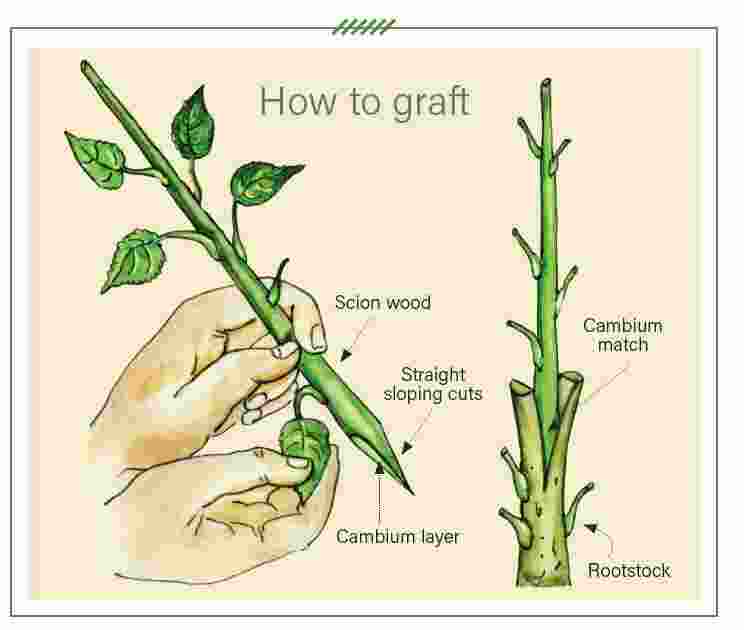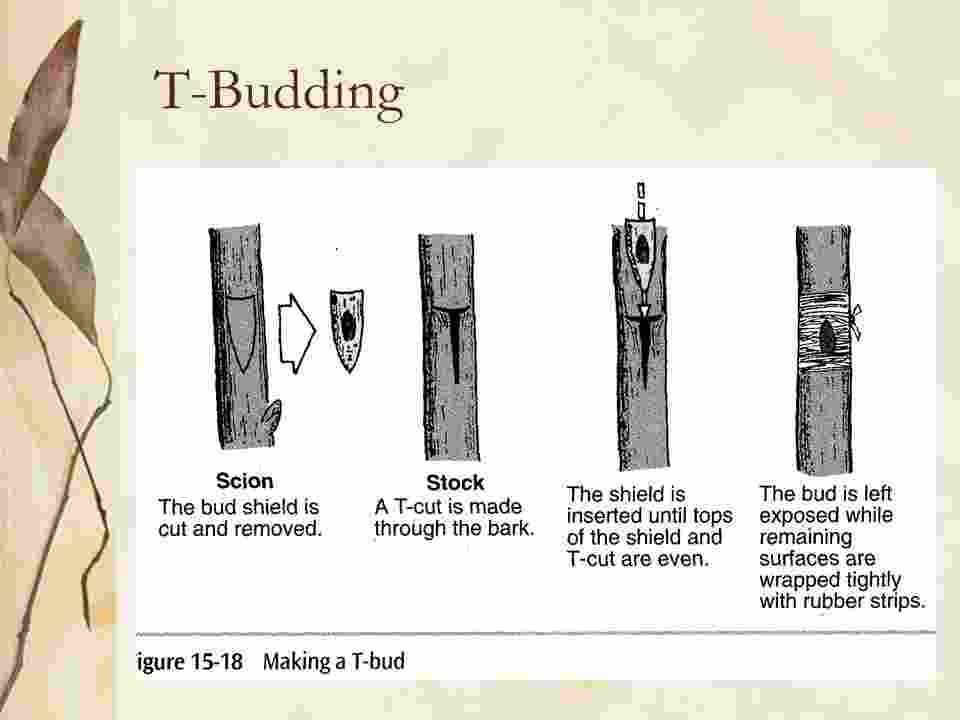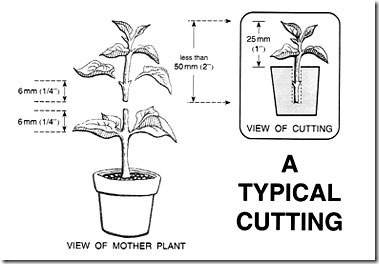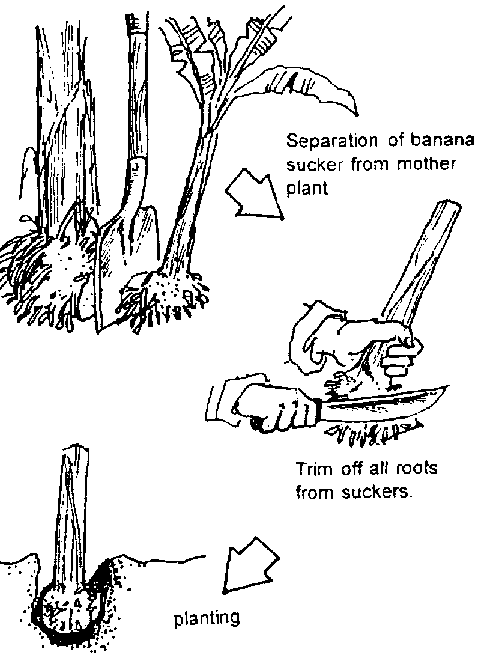 Alfred Ajibola
- Mon, 27th January, 2020 @ 12:25 PM
Alfred Ajibola
- Mon, 27th January, 2020 @ 12:25 PM
Topics in Agricultural Science
Soil formation in agricuture Economic empowerment through agricuture Management as a factor of production in agriculture Labor as a factor of production in agriculture Finance as a factor of production in agriculture Water as a factor of production in agriculture Land as a factor of production in agriculture Len Academy Agricultural Science midterm questions for JSS1, 2nd term Len Academy Agricultural Science midterm questions for jss2, 2nd term Clay soil explained with its types and characteristics Loamy soil explained with its characteristics Sandy soil: Characteristics of sandy soil and ways to make it fertile Soil explained with its composition Types of agricultural practices Crop rotation explained Benefits of crop rotation Differences between subsistence and commercial farming Subsistence farming explained with its characteristics What is commercial farming? Types of commercial farming Characteristics of commercial farmingAcademic Questions in Agricultural Science
The ideal pH for the optimum growth of most agricultural crop is between _____.
A. 1 – 3.5
B. 4 – 5.5
C. 6 – 7.5
D. 8 – 9.5
E. 10 – 11.5
F. 12 – 13.5
People who go about their lives by raising and herding livestock such as cattle, sheep and goats are said to practice _____.
A. Pastoralism
B. Pasturalism
C. Herding
D. Herdsmen
E. Animalism
F. Anime Farming
The act of giving birth in pigs is called _____.
A. Calving
B. Piggery
C. Kidding
D. Farrowing
E. Calfing
F. Pigging
Which of the following is not a vegetable?
A. Cashew
B. Cocumber
C. Tomatoes
D. Carrot
E. Squash
F. Eggplant
All plants are crops.
A. True
B. False
In agriculture, macronutrients are essential nutrients required by plants. Which of the following is not a macronutrient?
A. Zinc
B. Sulphur
C. Calcium
D. Phosphorus
E. Potassium
F. Magnesium
Which of the following is false concerning micronutrients?
A. They are non-essential nutrients
B. They are required by plants in minute quantities
C. Iron is a micronutrient
D. Chlorine is a micronutrient
E. Copper is a micronutrient
F. Boron is a micronutrient
_____ is a term that describes the biological, chemical and cultural control tactics employed to make pest management economical, environmentally friendly and socially acceptable.
A. Integrated Pest Management
B. Integral Pest Management
C. International Pest Management
D. Inclusive Pest Management
E. Imbibed Pest Management
F. Inclusion Pest Management
Asexual propagation in plants is defined as the breeding of a specific plant specimen through natural processes by taking a vegetative part of the parent plant or stock.
Asexual Propagation is also referred to as vegetative propagation or asexual reproduction since a vegetative part of the plant (that is; root, stem, or leaf) is taken and made to regenerate itself into a new plant. The resulting plant that forms from this process is termed a clone of the parent plant.
A clone in this instance of asexual reproduction refers to a genetically identical offspring to it’s parent plant. For this reason, pollen grains and egg cells (which are associated with the plant's sexual reproduction) are not required in clone formation.
Clone formation is the best way to retain some plant species, especially the best of their kinds.
Various techniques are used to bring about vegetative propagation (or plants' asexual reproduction). They include:
Grafting requires that a part of the parent plant is cut off and joined to another rooted plant so that they can grow as one plant.
The image below shows the the process of grafting:

The term scion refers to the branch of the cut plant (desired variety) that will be grafted to the other rooted plant. Such rooted plant is called the stock. In this regard, grafting is done on a stock plant, with a very strong root system.
Please read on agricultural terms and their meanings here.
Grafting can be achieved through various methods: Some of these include:
Wedge Grafting
Cleft Grafting
Tongue Grafting
Bark Grafting
Butt Grafting
Side Grafting
Budding is a type of grafting. In fact, It is also called bud grafting.
The major difference between budding and grafting has to do with the shape on the stock on which the scion is inserted.
In budding, the part of the stock in which the scion is inserted is cut in a 'T shape'.
The image below shows an instance of budding:

The scion is inserted into the T shaped stock. The cut is then covered by winding a strip of polythene sheet, keeping only the bud exposed.
We have different types of budding. They include:
Chip Budding
Patch Budding
T-budding
You can read on the reproductive differences between gymnosperms and angiosperms here.
In cuttings, a part of the parent plant is severed (cut away) and planted. After some time, the severed part regenerates into a new plant. The image below shows this:

Cuttings are categorized into different types depending on the part of plant severed. They include:
You can Attempt Len Academy questions on agric science here.
This technique of vegetative propagation is similar to stem cuttings. The difference is summarized in the quote below:
In normal stem cuttings, the stem (not having roots) are cut away from the parent plant before it is planted.
In layering, the stem is first allowed to develop roots. These roots must be formed on the stem of the mother plant for layering to occur. Only after the formation of the root can we cut off the stem and plant it.
Below is an image showing the process of layering:

We have different types of layering. They are:
Air Layering
Mound (stool) Layering
Compound Layering
Tip Layering
Simple Layering
Please read on anatomical and structural differences between gymnosperms and angiosperms here.
Separation applies to plant that produce corms and bulbs.
During separation, the new shoot (part of the plant above the root) is first detached (or separated) from the parent plant before it is planted. The bulbs of tulip and lily plants can be separated in this way.
The image below shows the process of separation:

Note: Certain bulbs may also produce smaller bulbs termed bulblets. The bulblets are always attached to the base of the parent bulb and can be easily separated in order to bring about vegetative propagation.
Please read on the differences between plants and crops here.
Another instance of separation is seen in cormels. The cormels refer to little or baby corms that attach to the parent corm, and these can also be separated for the purpose of vegetative propagation.
Division is quite different from separation. In division, different parts of the plant (having buds) is divided into two or more parts (or sections). Each of the section is then planted to produce an independent plant.
Examples of plants the can be propagated via division are the rhizomes of iris and lily plants. Also, stem tubers like yams and potatoes with the presence of buds in various sections can also be propagated through division.
Below is an image of Kangaroo Paw Rhizome that had undergone division:

Division is generally used in asexual propagation when a cluster of plants are cut away into small units. When planted, the isolated units will grow into a parent plant.
You can Attempt Len Academy questions on agric science, JSS1 here.
Always understand that the process of division (in asexual propagation) does not occur naturally.
Kindly share this article via the links below:

Please click here to contact Alfred if you require any of the following services:
If you need a standard website at an affordable price.
Online training on the academic subjects: biology, chemistry and basic science.
If you require an advanced smart school management system (web application) for your school.
Click here to read on Len Academy Smart School Software.
Please click here to follow Len Academy on Google News.
Amazing facts in Agricultural Science
Cows technically have one stomach, not four. However, a cow's stomach has four compartments. These are: rumen, reticulum, omasum and abomasum
Peanuts are legumes and not nuts
Although plants neither see nor hear, they can recognize their siblings and even give them preferential treatments
Squirrels do plant more trees (through their actions) than an average human in their lifetime. They often hide their acorns and nuts underground and forget about them
Cows have got the ability to walk up stairs, but not down stairs
A group of cows is called a team, drove or herd.
People just prefer to call them herd
Notable points in Agricultural Science
Below are characteristics of gymnosperms:
Their seeds have cones that protect them.
Sepals and petals aren't present in their cones.
Stigma and style are absent.
They do not produce fruits. Only seeds are formed.
Companion cells are absent.
Sporophyll form the cones.
Anther and filament are absent.
The ovules are not present in the ovary.
Gymnosperms do not possess flowers.
Please read on the anatomical differences between gymnosperms and angiosperms here
The flower is the reproductive organ in plants' sexual reproduction. In order to achieve a successful sexual propagation or reproduction in plants, the floral parts of the flower are utilized.
The floral parts of a flower consists of the followings:
Sepals
Petals
Stamen
Carpel
The stamen is male portion of a plant. It consists of the anther and filament.
The carpel (or pistil) is the female portion of the plant. It consists of the stigma, style and ovary.
An organism will be considered a pest if it does one of the followings:
Attack crops and eat its seeds, roots, stem, leaves and flowers. Examples are locust and grasshoppers.
Cause damage to stored food, fruits or other agricultural produce. Some may even urinate or deaficate on these products. Examples are rodents, cockroaches and mice.
Attack and kill farm animals like goats, sheep and cattle. Examples are foxes, wild cats and snakes.
Act as disease vectors. A vector is an organism that carries parasite and other disease causing organisms, without being affected; but when they introduce the parasites into their host, such host becomes infected with disease. Examples of vectors are rodents and mosquitoes.
Below are the classification of crops based on their uses:
Oil crops
Vegetable crops
Latex crops
Drug and Medicinal crops
Beverage crops
Fibre crops
Fruit crops
Root and Tubers
Legumes
Spices
Cereals
All crops are plants but not all plants are crops. Below are some instances:
Weeds are considered as plants, not crops.
Parasitic plants are not necessarily crops. Examples of parasitic plants include mistletoe, corpse flower and striga.
Carnivorous or insectivorous plants are not necessarily crops. Examples are sundew, venus flytrap and pitcher plant. The image below shows a carnivorous plant (venus flytrap).

Meanwhile, always understand that all crops are plants, and they are grown for food, money or something beneficial.